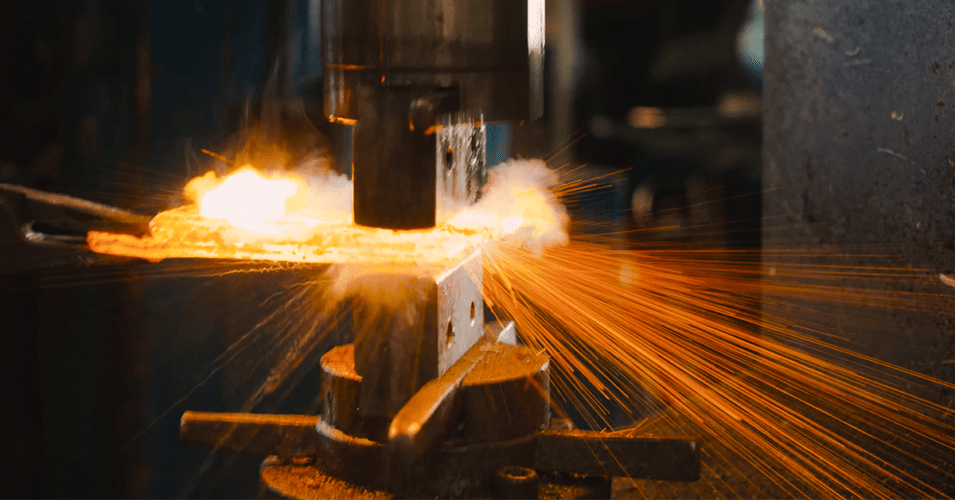When you think of blacksmithing, you might conjure images of a burly figure hammering away at a red-hot piece of metal in a dimly lit workshop. This classic image is a representation of one of the oldest and most fundamental processes in metallurgy: hot forging. Hot forging is a manufacturing technique that has been used for centuries to shape and strengthen metal objects. In this comprehensive guide, we will delve into the basics of hot forging, exploring its history, techniques, applications, and the science behind this age-old craft.
A Brief History of Hot Forging
Hot forging has a rich history that dates back thousands of years. The earliest evidence of hot forging can be traced to ancient civilizations such as the Egyptians, who forged iron and copper into tools and weapons around 1500 BC. Over time, blacksmithing and hot forging techniques spread to other parts of the world, evolving and adapting to various cultural and technological advancements.
During the Middle Ages, blacksmiths played a crucial role in producing armor, weapons, and everyday items. The Industrial Revolution in the 18th century brought about significant changes in the forging process, with the introduction of steam-powered hammers and presses that increased efficiency and precision. Today, modern technology has further revolutionized hot forging, allowing for mass production of complex components used in various industries.
The Basics of Hot Forging
Hot forging is a metalworking process that involves heating a metal material until it reaches a malleable state. This is typically done in a furnace, where the metal is brought to a temperature above its recrystallization point but below its melting point. The heated metal is then shaped using various tools, such as hammers and dies, to achieve the desired form.
Here are the key steps involved in the hot forging process:
- Heating: The metal workpiece is heated in a furnace to the required forging temperature. The specific temperature varies depending on the type of metal being forged.
- Deformation: Once the metal is at the correct temperature, it is placed on an anvil or die, and a hammer or press is used to deform it. The force applied causes the metal to flow and take on the desired shape.
- Cooling: After forging, the hot metal is often quenched or cooled in a controlled manner to enhance its properties. This cooling process can affect the material’s hardness, strength, and other mechanical properties.
- Finish and Inspection: The forged component is then typically finished through processes like machining or grinding to achieve precise dimensions and surface quality. It undergoes rigorous inspection to ensure it meets quality standards.
Applications of Hot Forging
Hot forging is a versatile manufacturing process with a wide range of applications across various industries. Some common uses of hot forged components include:
- Automotive Industry: Hot forging is used to produce critical automotive components such as crankshafts, connecting rods, and gears, which require high strength and precision.
- Aerospace Industry: Forged parts are crucial in aerospace applications, including aircraft landing gear, turbine blades, and engine components.
- Construction: Many construction equipment and machinery components, such as bolts, pins, and anchors, are hot forged for their durability and strength.
- Oil and Gas: Hot forging is employed to create heavy-duty components used in the oil and gas industry, including valves, flanges, and drilling equipment.
- Firearms and Defense: Firearms and military equipment often contain hot forged parts, ensuring reliability and performance under extreme conditions.
The Science Behind Hot Forging
Hot forging relies on several metallurgical principles. When a metal is heated to its forging temperature, it undergoes recrystallization, a process in which the internal structure of the metal grains changes. This makes the metal more ductile and easier to shape. As the metal is deformed during forging, its grains align in the direction of the applied force, enhancing its strength and reducing its porosity.
Additionally, hot forging can improve the material’s properties by eliminating defects and promoting uniformity in the structure. The controlled cooling process, known as heat treatment, further refines the mechanical properties of the forged component.
Hot forging is a timeless and essential manufacturing process that has stood the test of time. Its ability to create strong and durable components has ensured its relevance across countless industries. As technology continues to advance, hot forging techniques will likely evolve even further, pushing the boundaries of what can be achieved in terms of precision and complexity. Whether you are a blacksmith in a traditional workshop or an engineer in a cutting-edge manufacturing facility, understanding the basics of hot forging is key to appreciating this age-old craft and its modern applications.
